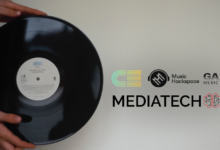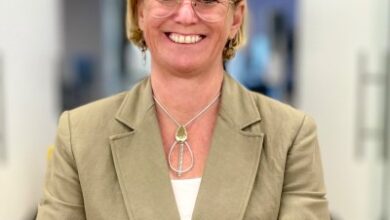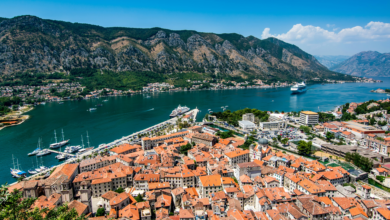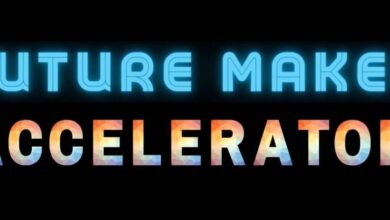
Meet creative maven and media bad ass Tamara Deike, CEO/Founder of Aces High Creative.
She’s done and seen it all, from helping Rose McGowan launch her book, to producing events for giants like Facebook, Spotify, Beck, and a music video for Cage The Elephant, to recently launching Bring Music Home, “A Photography & Film Project Celebrating the People & Places of Live Music.”
Her depth of expertise and industry prowess is a dream for any professional in the creative industries. Check out how she got started, by launching record labels and spinning records in the UK and Germany, her passion for the music industry, and why if she had a super power, it would be the ability to turn Republicans into Democrats.
Talk to us a little bit about what Aces High Creative is, and how you got into the creative industries.
Tamara: yeah maybe the best place is to start from back in the day. I started off in the music industry at a record label where we sold records and cds and, you know, I physically phoned stores and to ask them to buy my shiny things. It was particularly challenging because it was dance and house music, which was really unpopular and didn’t get a lot of shelf space in your average retail store. I’ve always been tied intrinsically to the music industry, when I was 15 I had a zine on campus and used to promote shows in my college apartment as a freshman on campus, and charge people to get into my parties. Then over the years I’ve transitioned through a number of different careers within music and technology and media to your point John. Working for music tech startups, managing artists, a talent booker, I was a DJ myself for many years, I lived overseas in London, Berlin for seven years; I also had my own agency over there where I really got into event production as well, I love to host a good event love to bring people together. Then you know, I wrote for Vice, I continue to write today about music centric concepts and topics, and even worked for a number of years in the background music space for physical retail luxury and hospitality brands. Actually developing playlists and music profiles and programs to utilize these marketing tools really to help increase footfall dwell time and increase brand love basically for stores like Marc Jacobs, H&M, and even Walmart, and for hotels like Marriott and the Line Hotel, helping them to connect with their consumers and their guests using music as a vehicle to do that.
About a year ago, just over a year ago, I decided to leave LA and come to Austin and set up my own business here. That business at the time was really fueled around supporting creatives and brands to kind of realize their dreams and help them make things happen, that’s kind of the short version. Creative strategy can be all those things, taking the nucleus of an idea and building around it, and executing it, making it realistic. So producing events was was one of those offerings, creative strategy, and then sound design, and audio branding. To be very frank, the event production thing was really keeping me busy and I was traveling all over the US and I was producing events for Facebook and Spotify and for artists like Beck and Cage the Elephant and then I had a number of events lined up for SXSW and of course they all went away…
You saw most of your year if not all of you year disappear in a blink of an eye, but then you started Bring Music Home, can you talk about that?
Tamara: Absolutely, Bring Music Home – my dear friends Amber Mundinger of the Artist Den tv series out of New York and my friend Kevin Condon who is an incredible photographer in the music space rang me up in early March, and had an idea. The idea was, we know that music venues are closed, we know that musicians are currently out of work, and kind of life is at a standstill; we should be documenting this, why don’t we go talk to these people. We created a strategy that had safety at the top of the pyramid of course because we didn’t know a lot about corona at that time obviously, and we wanted to be safe, not only for us but for the venues that we were speaking to. We called up a few friends in a couple of key cities, we decided we would just start with five cities so it was LA, San Francisco, New York, Nashville, and Austin. We reached out to some incredible photographers that we know in those markets and started to ring the venues and say, listen we’d love to talk to you the people behind live music culture, the ones who are keeping the lights on, the ones who are there seven days a week trying to you know bring amazing culture to your communities. The plan was to document their stories, talk to them about why they’re passionate about music, what they do, what they’re hopeful for, and photograph them in portraiture photography, to create a coffee table book; is the product that that we initially set out to create, and pretty quickly we realized that five cities was never going to be enough.
The pandemic wasn’t going away and we’re in the middle of documenting something extremely important and we shouldn’t stop, so we started to build out an incredible group of creative collaborators across the U.S., many of which we knew and some of which we did not know. It’s been amazing to get to know such a diverse and beautiful group of humans, who are truly unbelievably talented and at the top of their game. From a video production capacity, production in general, and then also photographers. So really small nimble teams in each of these cities that we started to build out more now in 30 cities nationwide, we have shot over 200 music venues across the U.S., which is upwards of 400 individual interviews. This is in the middle of a pandemic that’s obviously continued to go on and on, have obviously been very deeply impacted by this, they were the first to close the last open.
It is a scary story, straight up it’s a story of tenacity of grit, how have they pivoted? what have they been doing? what does the new model look like? Because here’s the thing, and you know this very well, the music economy was broken long before this happened, strictly depending on ticket sales and alcohol revenue is not enough. As someone who has also witnessed firsthand the way that other countries navigate and patron the arts more broadly speaking, the money that they invest into those economies we have a real problem here in the U.S., and I certainly don’t have all the answers but i’m trying to on a very small scale shine a light on just one aspect of what that problem looks like. I hope that when we’re done with this, when we come through the other side whatever that looks like, that we’re stronger and have made some really important changes and developments that are that are going to make the music economy better in the long run.
That’s a really good point. We know that the venue economy hasn’t changed in decades, what are you seeing venues doing that’s successful, beyond leveraging streaming technology?
Tamara: Great question, and it’s something that i’m thinking about all the time, as is our founder group for bring music home. We want to be a part of that solution, so we’re thinking about some of those things as we speak. That said, I think what I believe has started to happen and we will continue to see happening, is an evolution in terms of the way that venues are structured and set up. Meaning the physical spaces, we did see some of this previously with cafes and restaurants, and some of the more metropolitan cities in the U.S. and overseas too, whereby during the daytime hours it’s one thing and in the evening it’s something else. The two groups/two entities can effectively share the rent costs. That’s not rocket science by any means, but I think we’re going to see more collaborations, more ways in which these venue groups are starting to think about other groups that they share ownership.
Is there a cooperative model for the staff even or for record labels that you patron as a venue whereby you’re always generally booking artists from the same 12 labels, let’s say is there a cooperative way in which shared ownership and investment can come together to sustain the the physical space.
I also am starting to see, as an example with The Parish and Empire Control Room here in Austin, where they’re starting to interject other services and offerings within the four walls of their space. I’m probably not gonna get this exactly right but I believe that they’re offering music production, and video production support, in the four walls of their space. So if you’re a musician and you need a video for social media, or for a promo you’re creating or whatever, it might be that they then have those services available to offer.
I think we’re gonna see more brands putting their money, I hope, where their mouth is. For how many decades have we watched brands stand on the shoulders of the creativity and the cool cachet that musicians and music more broadly speaking provide them with? They’ve always been intrinsically connected and so now more than ever brands, musicians, venues, the music economy need your help! Yeti is doing a great job for example, Vans has been doing a great job, there are lots of brands out there that are putting their money where their mouth is so to speak, and they’ve been jumping in and helping. I hope that we start to see more of that, and I hope that it’s more than just a “hey yeah we’ll sponsor your tour,” but more integrated support from brands whereby you know maybe it’s a couple of brands that have a stake of ownership in a space?!
Your point about technology integrations and live streaming, a lot of venues have seen some success with live streaming. Instead of being limited by the legal capacity of your venue and what the city ordinance says, you’re allowed to have it you know legally in your space. I think the technology integration piece, we’re going to continue to see it get better, people are going to get sharper they’re going to get better with the production of those shows. Venues can then start to open up tickets and passes to anyone anywhere in the world that wants to observe, or witness, or participate in a show. Your cousin in rural Kentucky that doesn’t have any venues around him maybe wants to see a show at The Mohawk.
For people that are thinking about the creative industries, or being a creative director, what does that mean and how does somebody pursue that career?
Tamara: I honestly feel like my intuitions have usually been very prominent in guiding me. That hasn’t always been the right choice. One thing I will say, is my asshole radar has gotten a lot better. So choosing who to work with it’s always a choice even when it feels like you don’t have a choice, it’s always a choice. I think that there was a time in my life when I really believed that having such a diverse background, having worked at all the all these different types of companies, different sizes, the biggest company I worked for had 400 staff and then of course I’ve been a solopreneur, and I’ve run the gambit of working in offices working from home working remotely working remotely overseas I’ve done all these different types of things. I used to believe that that was somehow a handicap, and I realize now that it’s not it’s a strength. Every time you go through these types of challenges you pick yourself back up, you learn how to adapt very quickly, you learn how to be nimble, your network continues to expand and grow, especially when you treat people well. Then you have this diverse group of people that you can call upon, and any kind of vertical, and ask them questions that you don’t have answers to; be vulnerable, reach out.
If someone’s trying to get into the creative industry, I think that the first step is recognizing what your creativity looks like. For years I’ve struggled with what am I actually creative with. I don’t have a product that I make, I don’t paint, I don’t draw, I don’t make jewelry you know? So what, am I really a creative? I’ve made peace with the belief that I am creative, everything I do I’m creative, in everything that I tried achieve and the way that I work. My creativity if I’m thinking about a product It’s really the way that I strategize, and it’s also my writing, my writing is my creative voice. Creative director as far as a title goes to answer the other part of your question, I think that is a really nebulous work title, and I’ve seen it mean so many different things at this point. I’m not a graphic designer, I think traditionally creative directors were meant to be both creative, and thinking and strategy, but also able to maneuver between a variety of different skill sets within an industry. Whereby all creative flows up and downward from them, I think that’s still important, but I think this belief that you have to also be a designer in order to be a creative director is going away, because people need creatives who can navigate between directing content, post-production, art direction, and experiential.
A lot of people aren’t familiar with audio branding, can you talk a bit about that, and why it’s important?
Tamara: Audio branding is basically helping a brand to discover the core sound identity that represents them as an organization. When you’re defining a brand audio, brand effectively, it’s very similar to the way that a design agency would develop a visual identity system for a brand. Audio should fit into that system. When we are assessing a brand we want to determine historically where have they been with sound, with music, with voice. What are the key components that have helped the brand to become who they are today from a sound perspective and who are they today? Where are they utilizing sound and audio? Is it tv commercials and radio? Is it a podcast that they might have created? Did they have any sound or audio in their app on their website etc? and then coming out on the other side of that with what we’ve created, which is a proprietary audio audit – which effectively tells them where they’re strong where they’re weak and where their competitors sit in terms of audio branding. Then we go away and we take those findings and we develop a core brand audio identity system for them to utilize across all channels like I mentioned. It could be UI/UX in their website, or in an app. It could be for a podcast that they’re creating or developing. Tonality, intention, and emotion, all those things are so important when you’re developing a sound identity system. Then what really helps make us stand apart is that we’re music people. We all come from music backgrounds, my entire team are musicians, vocalists, music producers, sound engineers, etc. So we go and create the original I.P. you’re not going to hear this anywhere else, and it’s not coming from some audio library shelf somewhere, that potentially another brand has used multiple times. It’s original, it’s yours, and it’s yours forever. Then sound design which goes hand in hand with audio branding, is really helping brands to develop those unique sound usage elements, and divine defining examples of those sound types, that they can utilize in different places. So really getting into the weeds of actually creating those sounds for example, we had a client recently where we designed more than 100 unique sounds as part of the sound design package for a virtual reality experience. It’s a lot of work but It’s incredible. It sounds unlike anything you’ve ever heard before, because you’ve never heard it before. To your point though, I think brands are beginning to recognize the importance of audio branding and sound design. You want to reach your audience in the middle of a pandemic and you can’t do experiential basically, so you have to find new ways to to market to them and new ways to reach them on an emotional level and sound does that incredibly well.
When people think about Aces High Creative, and Tamara Deike what do you want them to think?
Tamara: I want them to think that we are incredibly capable of bringing bringing creative ideas to life and that we have a ridiculously diverse group of expertise amongst myself and my teammates we don’t believe in doing anything halfway and are extremely detail-oriented and really passionate about what we do and so as far as our services go you know creative strategy any type of project that you’re trying to bring to life whether that’s digital in real life a marketing concept we can help you ideate figure it out and then help you execute
If you had a super power, what would it be?
Tamara: To turn all the Republicans into Democrats. Not that I believe in homogeny but in this particular instance, that’s what I would do.
To keep up-to-date with community spotlights and more, join us.






